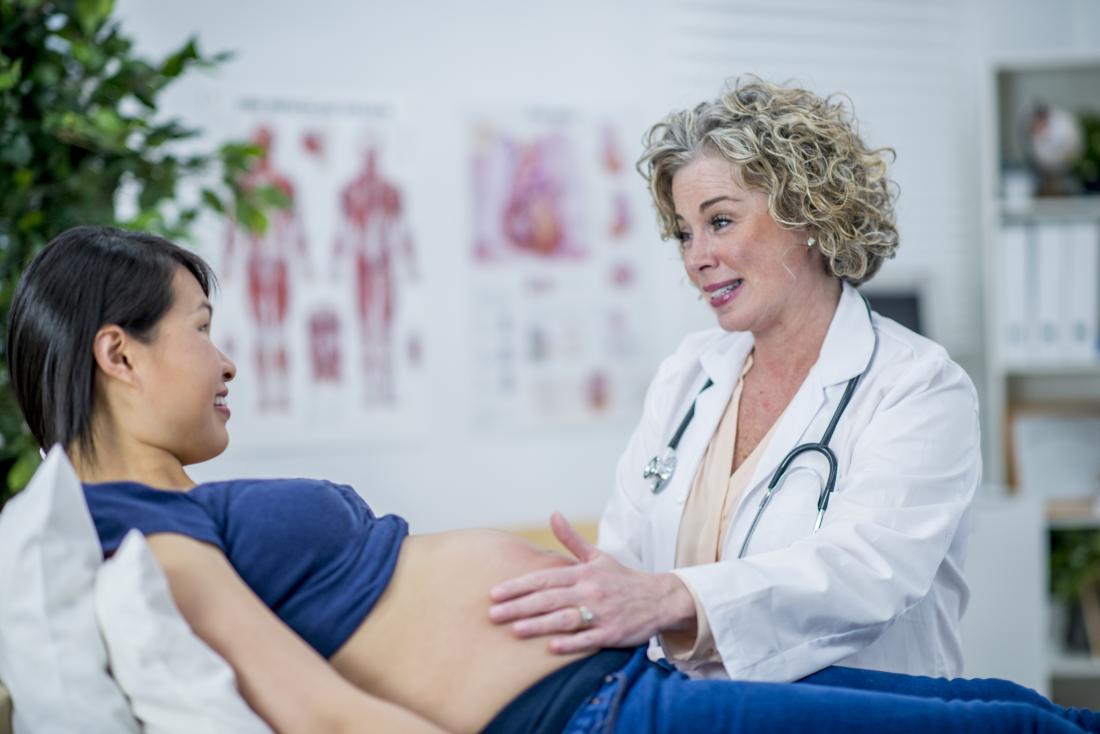Pregnancy consists of three trimesters. The second trimester lasts from weeks 13 to 28.
In this article, learn what causes pain in the second trimester and how to find relief.
Causes
Second trimester pains are not uncommon, as the uterus and abdomen are expanding.
Increased pressure from a growing uterus, along with hormonal changes, can lead to various types of pain.
Some common causes of second trimester pains include:
Round ligament pain

Common causes of second trimester pains include round ligament pain and back pain.
The round ligaments support the uterus and hold it in place. During pregnancy, the expanding uterus causes these ligaments to stretch.
Round ligament pain often starts as the belly grows in the second trimester.
Symptoms of round ligament pain include:
- a sharp or aching sensation, usually on one side of the belly
- pain that is more noticeable after exercise or when changing positions
- pain that may radiate to the groin or hip
Round ligament pain may last from a few seconds to several minutes.
Braxton-Hicks contractions
Braxton-Hicks contractions may start anytime in the second trimester of pregnancy. They involve the tightening of the uterus’ muscles.
These contractions differ from true labor in a few critical ways — they are brief and do not come at regular intervals.
Symptoms of Braxton-Hicks contractions include:
- squeezing or tightening of the uterus
- pain that occurs more frequently at night
- pain lasting anywhere from 30 seconds to 2 minutes
Braxton-Hicks contractions may be mild at first, but they can become more painful as pregnancy progresses.
Leg cramps
Leg cramps are a common cause of pain during the second and third trimesters of pregnancy.
They can develop when blood vessels or nerves in the legs are compressed. A lack of magnesium in the diet can also cause leg cramps.
Restless legs syndrome, which causes discomfort in the legs, can also occur during pregnancy.
Some research indicates that restless legs syndrome develops 2 to 3 times more often in pregnant women than the rest of the population.
Symptoms of leg cramps include:
- sudden pain in the calf or foot
- involuntary contractions of the muscles in the calf
- pain that may be worse at night
Symphysis pubis dysfunction
Symphysis pubis dysfunction, or pelvic girdle pain, may occur in about 31 percent of pregnant women.
The weight of the uterus can place extra stress on the pelvic joints, causing them to move unevenly.
Symphysis pubis dysfunction can also result from hormonal changes. During pregnancy, the body releases hormones that loosen and stretch certain ligaments in preparation for childbirth. These changes can contribute to pelvic pain.
Symptoms of symphysis pubis dysfunction include:
- pain in the center of the pubic bone
- pain radiating to the thighs or perineum (the area between the vagina and anus)
- difficulty walking
Back pain
Low back pain is one of the most common types to arise during pregnancy, and it often starts during the second trimester.
According to some research, about two-thirds of pregnant women develop low back pain.
Usually, it occurs because the growing abdomen is placing strain on the back muscles and causing changes in posture.
Symptoms of low back pain include:
- achy or dull pain in the lower back
- pain that worsens when bending forward
- stiffness in the back
When to see a doctor

Women who experience vaginal bleeding, vomiting, or fever during the second trimester should see a doctor.
Most common causes of second trimester pain do not require medical attention. However, pain at this stage of pregnancy can signify a problem, such as preterm labor, an infection, or another complication.
See a doctor if any of the following symptoms develop:
- contractions that occur at regular intervals
- vaginal pressure
- vaginal bleeding
- a severe headache
- sharp pain in the belly that persists, even after resting or changing positions
- vomiting, chills, or fever
- menstrual-like cramps that grow more severe over time
- fluid leaking from the vagina
Treatment
Before using pain relievers during the second trimester, it is vital to speak to a doctor. Some pain medications are not safe to take during pregnancy.
Certain complementary therapies may help reduce low back or pelvic pain.
A study involving 191 pregnant women found that complementary therapies, including acupuncture, aromatherapy, and reflexology, reduced symptoms in 85 percent of the participants.
Before trying any of these approaches during pregnancy, it is essential to talk with a doctor.
Home management
Home remedies can usually relieve second trimester pain, and the best approach will depend on the type of pain.
The following strategies may help:
- taking a warm (not hot) bath
- doing some light stretching to ease stiffness
- using a heating pad on the lower back
- wearing a maternity support belt
- using chairs with good back support
- avoiding standing in one spot for too long
- sleeping on the right or left side with a pillow between the legs
- avoiding changing positions too fast
- resting
Summary
Many types of pain can arise in the second trimester, including round ligament pain, back pain, and pain that results from symphysis pubis dysfunction.
In most cases, the underlying cause is a common issue, and a person can treat it at home.
In some instances, pain during the second trimester is a sign of something more serious. It is always best to see a doctor if the pain does not improve or otherwise causes concern.

